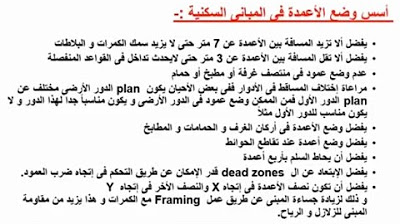Konteks ARSITEKTUR
Summary
TLDRIn this lecture, the speaker delves into the concept of design, using both architectural and clothing design as examples. The key focus is on how design must align with the context of its intended user or space. For clothing design, this means considering body size, as exemplified by different shirt sizes (S, M, L, XL). In architecture, the design must respect the land's shape and environment. The speaker emphasizes the importance of understanding the specific needs of the user, whether it's for a piece of clothing or a building, to ensure the design is functional and fitting.
Takeaways
- 😀 Design must always consider context: Whether it's fashion or architecture, context plays a crucial role in creating a functional and meaningful design.
- 😀 The design of clothing must align with the body size and shape of the wearer: A shirt's fit, for example, depends on the person's dimensions, which are essential for a successful design.
- 😀 Architecture design is heavily influenced by the site: Just as clothing must fit the person, a building must fit the site’s topography and location.
- 😀 A design that doesn’t consider the user’s or site’s needs will not work: Whether it’s an ill-fitting shirt or a poorly planned building, ignoring the user or environment leads to a failed design.
- 😀 Communication with the user is essential: Understanding the needs and desires of the individual is vital to designing something that will be truly effective and appreciated.
- 😀 Every design is a unique solution: A special edition shirt for a celebrity or a tailored building design demonstrates how designs must be personal and unique to the user or purpose.
- 😀 Size and form are key in design: Whether it’s the dimensions of a shirt or the shape of a building, size and form must match the intended user or location.
- 😀 Successful design involves a process: Both clothing and architectural designs require careful planning, from initial sketches to final execution, ensuring they meet all required specifications.
- 😀 Architecture must consider both environmental and functional needs: The location, surroundings, and purpose of the building all contribute to its design process, ensuring it serves its function properly.
- 😀 The design process involves continuous iteration: It’s important to refine and adjust designs based on feedback and analysis, making sure that the final product is practical and appropriate.
Q & A
What is the main topic discussed in the lecture?
-The main topic discussed in the lecture is about 'design context,' specifically focusing on how context is crucial in architectural and clothing design.
What does 'context' mean in the design process?
-In the design process, 'context' refers to the factors or elements that directly influence and cannot be separated from the design. It includes physical, environmental, and user-related elements.
How does body size relate to clothing design?
-Body size plays a crucial role in clothing design, as designs must be tailored to fit specific body measurements. If the size and fit aren't considered, the clothing might either be too tight or too loose for the person wearing it.
Can clothing designs be considered proper without considering the body size of the wearer?
-No, clothing designs cannot be considered proper if they do not take the wearer's body size into account. A poorly fitting garment, whether too tight or too loose, is not a successful design.
What example is used to illustrate the importance of size in design?
-The lecturer uses the example of t-shirts and how different sizes (S, M, L, XL) correspond to specific body measurements such as chest width and sleeve length, showing how vital these measurements are in clothing design.
What is the significance of tailoring designs to individual needs?
-Tailoring designs to individual needs ensures that the final product is unique, fits perfectly, and serves its intended purpose, whether it’s a piece of clothing or an architectural structure.
How does the concept of 'one-of-a-kind' design relate to the lecture?
-The lecture emphasizes that true design is unique and cannot be replicated exactly. For instance, a shirt designed specifically for a person like Cristiano Ronaldo would be a one-of-a-kind design, highlighting the personal and exclusive nature of such creations.
What is the connection between architecture and clothing design, according to the lecture?
-Both architecture and clothing design require a strong understanding of context. In architecture, the site or 'tapak' (location) must be understood thoroughly, just as in clothing design, the wearer’s body dimensions must be considered.
What is the importance of understanding the 'tapak' in architecture?
-Understanding the 'tapak' (site or location) is vital in architecture because it influences the overall design. The topography, dimensions, and potential of the site must be thoroughly understood before starting the design process.
How does the process of design differ when considering individual preferences?
-When considering individual preferences, designs must be flexible and adaptable to the user’s needs. For example, when designing clothes, the designer must factor in not just size but also personal style preferences, which adds another layer to the design process.
Outlines

This section is available to paid users only. Please upgrade to access this part.
Upgrade NowMindmap

This section is available to paid users only. Please upgrade to access this part.
Upgrade NowKeywords

This section is available to paid users only. Please upgrade to access this part.
Upgrade NowHighlights

This section is available to paid users only. Please upgrade to access this part.
Upgrade NowTranscripts

This section is available to paid users only. Please upgrade to access this part.
Upgrade NowBrowse More Related Video

محاضرة 41 ( الـ Statical System _ أسس وضع الأعمدة جزء 1 ) هشام طارق

Detail Design for Thematic Living Unit

TA UTS ARSITEKTUR UNM | KHASANAH TEORI ARSITEKTUR | AL ANSHAR RAHMAN | 210211500005 | A

Lecture 05: Summary and Discourse (Week1)

Concept vs Analogy, style and metaphor

How Upside-Down Models Revolutionized Architecture
5.0 / 5 (0 votes)